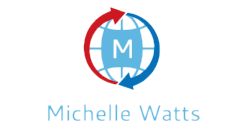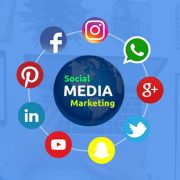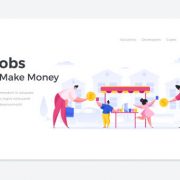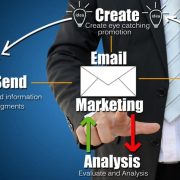Inbound marketing begins with a solid strategy. As with most endeavors, parts must be integrated to produce the desired result.
You must drive traffic to your site to gain visibility. It would help if you generated leads to take advantage of the traffic. You must convert leads into sales to take full advantage of traffic. No matter how successful you are, it is essential to analyze your processes.
Let’s look deeper at each strategy for creating a successful platform.
Generating Traffic
To create a high-traffic website, you need to use several different tactics. If traffic generation had a toolbox, you would reach for three of them: search engine optimization, blogging, and social sharing.
The first step in any SEO campaign is to identify the keywords your customers are likely to use when searching for information on the web. Keywords are your online language. They’re used in your backend code and content to attract search engines. The ultimate goal is to bring potential customers to your website.
The next step is to use the keywords correctly. You may have a lot of products, but each can only be on one page. A product or service is almost limitless. More blog posts equals more pages. A higher search ranking is achieved by having more pages.
Social media can be used to boost your blogging efforts. You can create campaigns that will send traffic to your site via clicks from your followers. Your loyal fans are also likely to share your content. This is a way to reach out to customers who were previously outside your reach.
Generating Leads
It’s great to see your website traffic increase. This is a reason for celebration. It’s not quite as exciting as increasing the number of solid, quality leads. Online lead generation can directly impact your bottom line and generate goodwill among your hungry sales staff.
Leads are generated online via landing pages and premium content. Visitors must be given clear calls to action to get the information about your company and the products they want. This can come as ebooks, webinars, or other forms of content.
The premium content can be in many forms, such as an educational booklet or white paper, a request for a sample, or even a technical document. Your ideal lead is a customer who wants more information and provides an email address so you can follow up.
Turning leads into customers
Like flowers, leads need to be nurtured. Leaders can’t just disappear in a vacuum. Even though some automated responses are appropriate, they can never replace real human interaction. A strong follow-up can result in your leads opting for more in-depth content, often through targeted emails.
It’s essential to understand your customers needs for this strategy. This is the only way to create deep content that addresses their problems or answers their burning questions. At this point, the lead begins to blossom, just like a rose. A website visitor was a potential client before. A possible customer inquiry is now a relationship.
Analysis and Measuring
The final strategy is distilled down to two questions.
What’s working?
What needs to be fixed?
Analyzing data, you can find out where your traffic comes from and which premium offers are the most popular. There’s no magic web wand that will guarantee success. A strategy that may work well for one company could be disastrous for another.
The analysis is not just about determining which ebooks or landing pages are the most popular. Lead nurturing should also be reviewed to ensure no leads slip through the cracks. The best website on the planet, with traffic that grows daily, will not be enough if there is no synergy among marketing and sales departments.
Each step is essential, but they are only useful with the others. Four strategies are combined to form a comprehensive plan. When you are building something new, a home is the perfect metaphor. These four steps are the foundation of all your inbound marketing campaigns.




















Comments